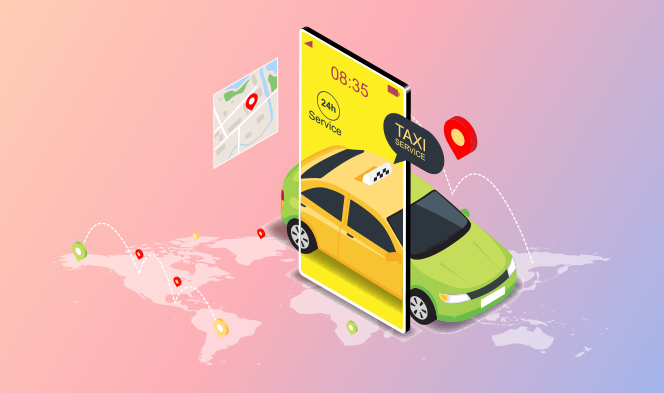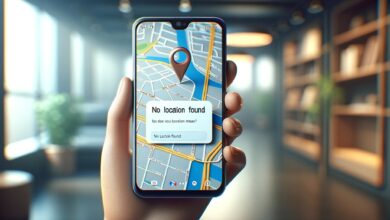How to Develop an Uber Clone App: A Step-by-Step Guide

Introduction
In today’s fast-paced world, ride-hailing apps have revolutionized the way we travel. Uber, one of the pioneers in this industry, has set a benchmark for success. Many entrepreneurs and businesses are now looking to develop their own ride-hailing apps similar to Uber, commonly known as Uber clone apps. This article will guide you through the process of developing an Uber clone app, from planning to deployment, ensuring a successful launch of your own ride-hailing platform.
Understanding the Concept of an Uber Clone App
An Uber clone app is a mobile application that replicates the core functionalities of the Uber platform. It allows users to book rides, track drivers in real-time, make payments, and provide ratings and reviews. Developing an Uber clone app involves creating a user-friendly interface, implementing robust backend systems, and integrating various features to ensure a seamless ride-hailing experience.
Market Research and Target Audience Analysis
Before diving into the development process, it is crucial to conduct thorough market research and analyze your target audience. Identify the demand for ride-hailing services in your target market, study competitors, and gather insights on user preferences and expectations. This research will help you refine your app’s features and tailor them to the needs of your target audience.
Defining Key Features and Functionality
User Dashboard
The user dashboard is the interface through which users interact with the app. It should be intuitive, user-friendly, and provide a smooth booking experience. Here are the key features and functionality of the user dashboard:
- User Registration and Profile: Allow users to create an account using their email or social media accounts. Users should be able to manage their profiles, including personal information, payment methods, and ride history.
- Booking and Ride Tracking: Enable users to book rides by entering the pickup and drop-off locations. Integrate geolocation services to provide real-time tracking of the assigned driver and estimated time of arrival.
- Fare Estimation and Payment: Provide users with an estimated fare before confirming the ride. Integrate multiple payment options, including credit/debit cards, digital wallets, and cash payments, to offer flexibility and convenience.
- Driver Ratings and Reviews: Allow users to rate and provide feedback on their ride experience. This helps maintain driver accountability and allows users to make informed decisions when choosing drivers for future rides.
- Ride History and Receipts: Provide users with a detailed history of their previous rides, including trip details, fare breakdown, and receipts. This feature helps users track their travel expenses and review past rides.
- Promotions and Referrals: Implement a promotions section where users can apply promo codes and discounts. Encourage users to refer the app to friends and reward them with referral bonuses or discounts on future rides.
Driver Dashboard
The driver dashboard is designed for drivers who offer their services through the Uber clone app. It should provide essential tools and information to ensure efficient ride management. Here are the key features and functionality of the driver dashboard:
- Driver Registration and Verification: Allow drivers to register and submit necessary documents for verification, including driver’s license, vehicle registration, and insurance details.
- Driver Availability and Accepting Rides: Provide drivers with the option to set their availability status (online/offline) and accept ride requests based on their availability. Display incoming ride requests with details such as pickup location, destination, and fare.
- Navigation and Routing: Integrate map services and navigation tools to assist drivers in reaching the pickup and drop-off locations efficiently. Provide turn-by-turn directions and real-time traffic updates for optimized routing.
- Earnings and Payouts: Display drivers’ earnings and provide detailed reports on completed rides, tips received, and incentives earned. Implement a secure payout system to transfer earnings to drivers’ designated accounts.
- Driver Support and Communication: Include a dedicated support channel for drivers to address their concerns, report issues, and seek assistance. Enable communication between drivers and users through in-app messaging or call functionality.
Admin Dashboard
The admin dashboard is the control center for managing and monitoring the entire Uber clone app ecosystem. It provides administrative tools and insights to ensure smooth operations. Here are the key features and functionality of the admin dashboard:
- User and Driver Management: Allow admins to manage user and driver accounts, including user verification, driver background checks, and account suspensions if necessary.
- Ride Monitoring and Dispatch: Provide real-time monitoring of ongoing rides, including ride status, driver location, and trip details. Enable admins to dispatch drivers for rides manually if needed.
- Fare Management and Pricing: Admins should have the ability to set and manage fare structures, surge pricing during peak hours, and dynamic pricing based on demand and supply.
- Analytics and Reporting: Generate reports and analytics on user activity, driver performance, revenue, and other key metrics. These insights help admins make data-driven decisions and identify areas for improvement.
- Promotions and Marketing: Admins can create and manage promotional campaigns, discounts, and referral programs to attract new users and retain existing ones. Monitor the effectiveness of marketing efforts through analytics.
Designing the User Interface
Create an intuitive and visually appealing user interface that enhances the user experience. Use modern design principles and ensure easy navigation throughout the app. Pay attention to factors such as color scheme, typography, iconography, and overall aesthetics. A well-designed user interface will attract and retain users.
Building the Backend Infrastructure
The backend infrastructure forms the backbone of your Uber clone app. It includes server setup, database management, and APIs for seamless communication between the user app, driver app, and the admin panel. Choose a robust technology stack that can handle high user traffic and provide scalability as your user base grows.
Implementing Payment Gateway Integration
Integrate a secure and reliable payment gateway to facilitate seamless transactions within your app. Provide multiple payment options such as credit cards, debit cards, digital wallets, and even cash payments if required. Ensure that the payment gateway complies with industry standards and adheres to security protocols.
Also Read: How to Develop Your Own Uber Clone App
Implementing Geolocation and Map Services
Geolocation and map services are vital for tracking user locations, matching drivers, and providing accurate navigation. Integrate a reliable map service provider such as Google Maps or Mapbox to enable real-time tracking and efficient routing. This ensures that users can find nearby drivers and drivers can reach the pickup and drop-off locations without any hassle.
Implementing Ride Matching Algorithm
Develop an efficient ride matching algorithm that intelligently assigns drivers to riders based on their locations, availability, and other factors. The algorithm should consider factors such as driver ratings, proximity, and trip history to provide optimal ride matches. Efficient ride matching enhances the overall user experience and reduces waiting times.
Testing and Quality Assurance
Thoroughly test your Uber clone app at each stage of development to identify and fix any bugs or issues. Conduct functional testing, performance testing, security testing, and user acceptance testing to ensure a robust and error-free app. Implement an iterative testing process to refine the app’s performance and user experience.
Deploying the App
Once the app development and testing are complete, it’s time to deploy your Uber clone app to the respective app stores. Follow the guidelines provided by Apple App Store and Google Play Store to ensure compliance and a smooth submission process. Prepare compelling app descriptions and engaging visuals to attract potential users.
Launching and Marketing Strategy
Plan a comprehensive marketing strategy to create awareness and drive user adoption of your Uber clone app. Utilize social media platforms, online advertising, influencer marketing, and other promotional channels to reach your target audience. Offer attractive incentives and referral programs to encourage user acquisition and retention.
Ensuring User Safety and Security
Prioritize user safety and security within your Uber clone app. Implement features such as SOS buttons, in-app emergency contacts, and driver background checks to ensure user trust. Establish a robust feedback mechanism to address user concerns and take prompt action against any safety-related issues.
Providing Customer Support and Feedback Mechanism
Offer reliable customer support channels such as in-app chat support, email support, and a dedicated helpline. Implement a feedback mechanism to gather user suggestions and address their concerns. Regularly analyze user feedback to identify areas for improvement and enhance the overall user experience.
Analyzing and Improving App Performance
Continuously monitor and analyze app performance using analytics tools. Track user behavior, engagement metrics, and conversion rates to gain insights into user preferences and app usage patterns. Use this data to make data-driven decisions and implement iterative improvements to enhance the app’s performance and user satisfaction.
Conclusion
Developing an Uber clone app requires careful planning, meticulous execution, and a focus on user experience. By following the step-by-step guide outlined in this article, you can create a successful ride-hailing platform that caters to the needs of your target audience. Remember to stay updated with the latest industry trends and continuously innovate to stay ahead in the competitive market.




